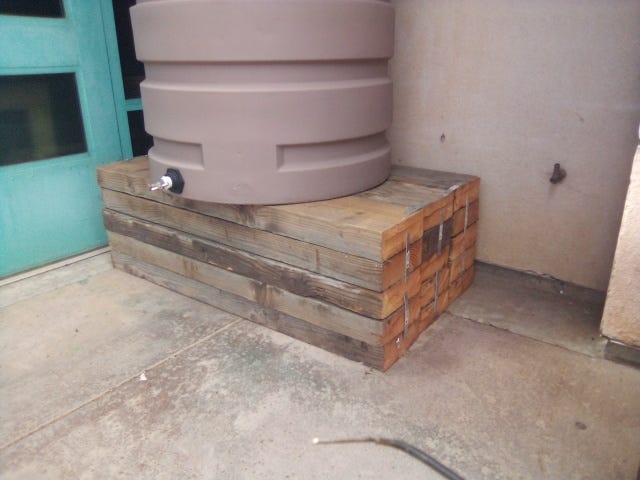Building with reused plywood
The practice can significantly lower greenhouse gas emissions and has other environmental benefits
We recently began replacing a boardwalk where I work*. The boardwalk goes through a walk-through aviary, and many of the boards had rotted or weakened. Boards had gone bad, but most of them were still good: strong, uncracked, and the timbers’ interiors still looking as new as when they were installed.
We were able to take a few of those timbers and use them to construct a stand for a recently acquired rain barrel. The rain barrel has a 200 gallon capacity. Filled to the brim it could weigh over 1,600 pounds. That water may remain in that barrel for a couple weeks or a month before being used, so the stand has to be sturdy.
We stacked up and joined the reused timbers in a solid block that can well support a load that heavy for several weeks. Besides the environmental benefits of reuse, the only transportation of the timbers was carrying them from one side of our small zoo to another.
We just made a small stand, but there is a growing effort to reuse construction material for its environmental benefits. According to the Global Alliance for Buildings and Construction, which is a part of the United Nations Environment Program, 38 percent of global greenhouse gas emissions in 2019 came from buildings and the construction of buildings, with a sizable portion of that coming from building construction. This includes the mining and smelting of steel and other metals, transportation of those and other building materials, and the emissions of performing the actual construction.
Keep reading with a 7-day free trial
Subscribe to The Green Dispatch to keep reading this post and get 7 days of free access to the full post archives.



